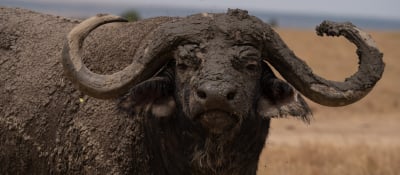INSPIRATION
An Insider’s Guide to the Great Migration

The annual wildebeest migration is the event in the Maasai Mara. In July and August, the most popular camps and lodges are more or less fully booked, and the Mara is crammed with tourists eager to catch a ringside seat at the greatest wildlife show on earth.
What we know as ‘the migration’ is in fact a cyclical movement of animals that takes place annually around the Mara in Kenya and the Serengeti in Tanzania. In constant flow, with no real start or end, the animals move around the Mara-Serengeti ecosystem, an area of approximately 40,000 square km.
Around 1.5 million wildebeest are involved, along with 350,000 Thomson’s gazelles, 200,000 zebras and 12,000 eland. As they pass through the territories of big cats and crocodiles, many meet a grisly end in the jaws of these vicious predators.
(Frank de Jongh)

While no two migration cycles are the same, there are some features of the animals’ movement that recur year after year. After the long rains of April and May, in about June, the animals start moving north into Kenya, crossing the savannah plains and rushing rivers of the Mara. During this time, they mate. When they start to move south again around October, about 90% of the females are pregnant. At the southern tip of this immense circle, the birthing starts; in January and February between 300,000 and 400,000 calves are born.
After the rains, when the calves are ready, the animals start moving north again.
WHAT TO LOOK FOR:
When the animals start massing on the banks of the river, or a little way from the river, and their numbers build up, it’s always worth watching and waiting. Park a little distance from the herd so as not to interfere with the natural dynamics of the animals, and take your time. Stay inside the car and make as little noise as possible. And wait. When the numbers of animals in the herd build up, and they appear agitated, stick around. You may well be treated to the extraordinary sight of them plunging into the water and pitting their wits against the waiting crocodiles.
TOP TIPS:
Bends in the river often build up pressure in the herds and cause the animals to cross. And they often choose places where there’s not too much cover for the predators to hide. Although on occasion, they’ve been known to plunge into the river in places that can only be described as suicidal.
POPULAR CROSSING POINTS:
- Mortuary, also known as Cul-de-sac, or even Mortuary Cul-de-sac, often attracts the animals when they’re crossing the river on their way south, heading back towards Tanzania.
- Main Rocky Crossing is so called because its gentle and wide slope down to the water attracts large herds year after year.
- Lookout Crossing lies directly beneath Lookout Hill, aptly called because it’s one of the highest points in the Mara.
- The Peninsula is a sharp curve in the Mara River in which lies a narrow nger of land that forces the animals into a narrow crossing, often of prolonged duration.
Map of the Maasai Mara (©Gamewatchers Safaris)

Related Content. Read Mara on a Budget
Our Top Experiences
SEEN SOMETHING YOU LIKE?
Enquire now and our team will create a custom itinerary tailored to your preferences.

CONTACT
enquiries@nomad.africa
Tel: +254 708 238 738
Purple Nomad Ltd
PO Box 69671 - 00400
Mwanzi Avenue, Nairobi, Kenya



